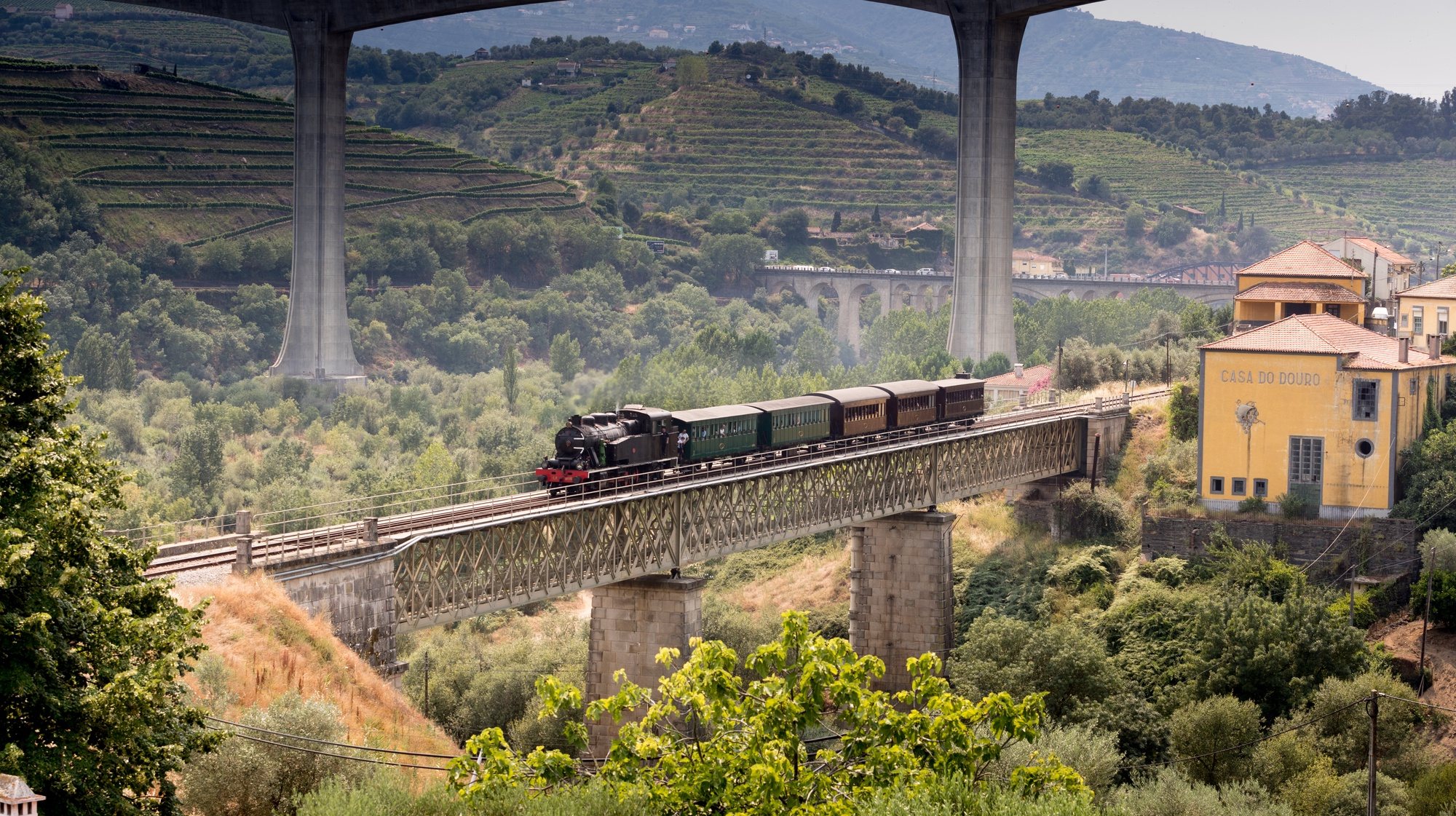Eixo Atlântico considers the manifesto a “propaganda act” and “insubstantial” and explained that the high-speed connection between Galicia and Lisbon is “fully” guaranteed by the Portuguese Government.
Eixo Atlântico distanced itself on Tuesday from the joint statement by the Galician Government and the Commission for Coordination and Regional Development of the North (CCDR-N) on the high-speed train, calling it a “propaganda act.”
The Atlantic Axis rejected the invitation to join the manifesto promoted by the Galician Government ‘High speed connection Galicia-Portugal: an obvious priority’, which qualifies as a propaganda act and of which completely demarcates“, can be read in a statement sent this Tuesday.
This Tuesday, at the old customs house in Valença (district of Viana do Castelo), next to the International Road and Railway Bridge over the Minho River, the Junta da Galicia and the CCDR-N signed a joint declaration in defense of an ironclad commitment to have the Porto-Vigo high-speed train in 2032, without excuses” due to delays by central governments.
For the Eixo Atlântico do Noroeste Peninsular, a cross-border organization that brings together 42 municipalities in the north of Portugal and Galicia, “the railway connection between Galicia and Lisbon is fully guaranteedSince the Government of Portugal is complying with all procedures in expected schedule“.
On the Spanish side, says Eixo Atlântico, “the government unblocked the southern exit of Vigo, with the first section, Vigo – O Porriño, in elaboration phase of the prior information study and, currently, the Government is also advancing in the procedures for the prior information study of the O Porriño – Portuguese Border section.”
Eixo Atlântico is waiting for the completion of the procedures for the new bridge over the Minho decisions of the Iberian Summit scheduled for autumn. We therefore consider both the manifesto and what the Secretary General said to be unnecessary. [Xoán Mao] define [como] “a ‘propaganda evening’ without any practical effect and, above all, without any need,” the organization believes.
For the Axis, if the board really wants to invest in the high-speed connection, “what it should do is call all social, economic and institutional actors to a prior meeting to reach a consensus on the strategy, the content of the statement and decisions, instead of inviting them to join a insubstantial manifesto“.
According to the organization, Tuesday’s signing represented “an act of greater glory on the part of the President of the Board.” [Alfonso Rueda] in which institutions and civil society reserve the mere role of applauders.”
The sole purpose of this act is to position oneself for Claim success as yours and results that are already guaranteed and that are the heritage of all groups (among which the Junta was not included), which we have been defending for years,” considers the institution with headquarters in Maia (Oporto district) and Vigo (Galicia).
Eixo Atlântico also points out that the Galician Government “never supported the proposal for this rail link that the Eixo Atlântico proposed to the Government of Portugal six years ago”, and that “it is surprising that this manifesto appeared after the change of Government in Portugal and not when António Costa [ex-primeiro-ministro] promoted and implemented this railway connection.”
“This manifesto and this act seek to divert attention and mask the inaction of the board in these infrastructures within its jurisdiction and in which did nothing in the last decade“, accuses Eixo Atlântico.
The Secretary General of the Axis, Xoán Mao, also expressed “his recognition to the Portuguese government of Costa, which definitely promoted This connection, already the current one [Luís] Montenegro for assuming the commitment of the previous Government and continuing to promote the line”, as well as recognizing the Spanish Government “for having unblocked the southern exit of Vigo”, crucial for the development of the high-speed line.
The connection from Porto to Vigo, in Galicia, which runs parallel to the high-speed line between Porto and Lisbon, includes stations at Francisco Sá Carneiro Airport, Braga, Ponte de Lima and Valença (Viana do Castelo district).
Source: Observadora
